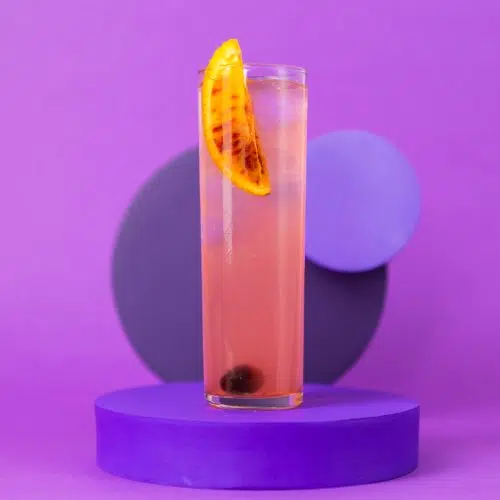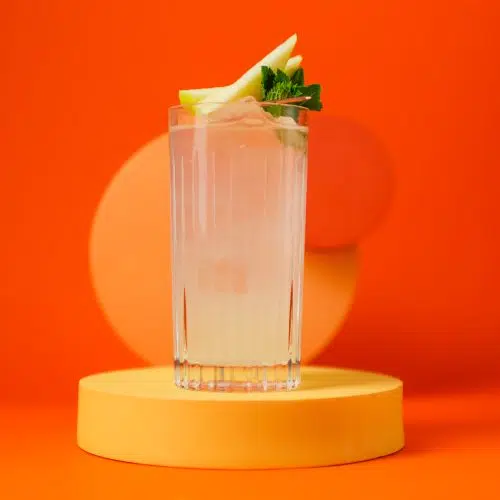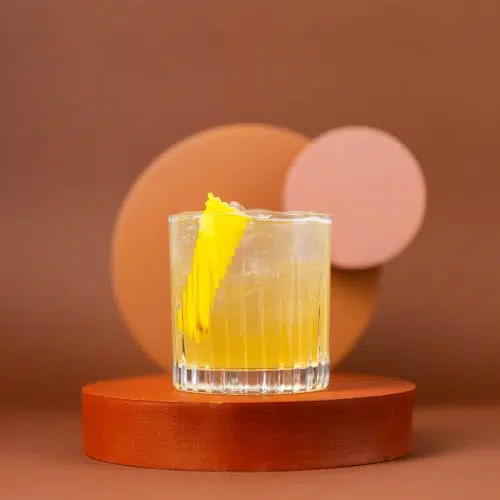Home / Soju
Soju
- Updated January 15, 2024

Soju Guide – What to Know Before You Shop Soju Online
Soju is a favorite from Korea. Drink it on its own, with a meal, or in a simple mix, and you’re in for a treat.
You’ve probably heard of K-pop, K-dramas, and the mouthwatering Korean BBQ, right? Well, there’s another superstar from Korea: Soju! This clear, smooth drink is like the heart and soul of Korean celebrations. Just as BTS and BLACKPINK have taken the music world by storm, Soju is the drink that starts the party in Korea.
What is Soju?
Soju is a clear, colorless, distilled alcoholic beverage of Korean origin. It is traditionally made from rice, wheat, barley, or sweet potatoes. Modern industrial production often uses pure ethanol and flavorings. Soju is consumed widely in South Korea and is one of the best-selling alcoholic beverages in the world.
Soju vs. sake
Even though sake and Soju might seem similar because they’re clear and often come in similar bottles, they’re different in how they’re made, taste, and are strong.
Sake is a Japanese drink made by fermenting rice. It’s a bit sweet and can have a fruity taste, with an alcohol level similar to wine. Conversely, Soju comes from Korea and can be made from different grains or starches. It’s a distilled drink, meaning it’s made by boiling a fermented mix and collecting the vapor, making it stronger than sake. Soju is smooth and slightly sweet.
Types of Soju
- Distilled
This is the traditional method of production. It involves fermenting a mixture of grains, usually rice, and then distilling the fermented mixture to produce a clear alcoholic beverage. The resulting drink has a higher alcohol content and a distinct taste. Traditional Andong is a prime example of this type.
- Diluted
This method involves diluting highly distilled ethanol with water. The ethanol is often derived from sweet potatoes, tapioca, or other starches. After dilution, flavorings and sweeteners are added to enhance the taste. Due to its cost-effectiveness, most commercial varieties available in the market today are made using this method.
- Flavored
This is a modern take, where natural or artificial flavors are added after the distillation process. Popular flavors include green grape, apple, peach, and yogurt. These flavored varieties are sweeter and have a lower alcohol content than traditional ones.
Different Sojus based on Ingredients
The choice of ingredients plays a significant role in determining the final product’s flavor, aroma, and texture. Here are the different types based on their ingredients:
- Rice-Based: Traditionally, this drink was made from rice. The grain undergoes fermentation, and the resulting rice wine is distilled. This method gives the drink a smooth and slightly sweet flavor profile.
- Starch-Based: Due to economic reasons, many South Korean ethanol producers shifted from rice to other starches like sweet potatoes and cassava. These starches are fermented and distilled like rice but impart a different taste and texture.
- Mixed Grain: Some varieties are made by blending different grains. This combination can include rice, barley, wheat, or other grains. The blend offers a unique flavor that fuses the individual grains used.
- Modern Flavored: With the evolving palate of consumers, manufacturers have started producing drinks infused with various flavors. These can range from fruits like apple, peach, and grape to more unique flavors like yogurt. These flavored varieties are generally sweeter and appeal to those who find the traditional version too strong.
What does Soju taste like?
Soju has a clean, neutral taste, similar to vodka, but with a slightly sweeter undertone. It’s smooth with a hint of warmth from the alcohol content. Depending on the ingredients used in production, some varieties might have a mild botanical or grainy flavor.
How much alcohol is in Soju?
Soju has an Alcohol by Volume (ABV) ranging from 16% to 25%, translating to 32 to 50 proof in the United States.
Soju’s alcohol content is milder than many other liquors. For comparison, rum, vodka, and whiskey typically have an ABV between 35% and 50%. This makes Soju less potent than these commonly consumed spirits.
Are there any Soju substitutes?
Soju has a few potential substitutes that can be used in its place, especially in cooking or mixology. One of the closest alternatives is vodka. Due to its neutral flavor and similar alcohol content, vodka can effectively replace Soju in many recipes or cocktails. Another option is sake, a Japanese rice wine. While it’s not distilled like Soju and has a distinct flavor, it can be a suitable substitute in some culinary dishes. Lastly, shochu, a Japanese distilled spirit, resembles Soju in production methods and taste.
Flavors
Fruit Varieties
Many brands have introduced fruit-flavored versions to cater to a broader audience. Apple, peach, grape, and citrus are among the most popular. These flavors offer a sweet and aromatic twist, making the drink more approachable for those who might find traditional Soju a bit strong.
Creamy Yogurt
Yogurt-flavored Soju combines the tanginess of yogurt with the kick of alcohol. It’s creamy, slightly sweet, and offers a unique taste that stands out from the usual fruit flavors.
Bubbly Sparkling
Some brands have added a fizzy twist to their lineup with sparkling Soju. This carbonated version gives a refreshing and bubbly sensation, perfect for those who enjoy sparkling wine or champagne.
Herbal and Unique Blends
While less common, there are flavors inspired by traditional Korean ingredients and herbs. These can range from ginseng-infused to those with hints of bamboo or other unique botanicals.
Top 7 soju brands
Jinro
Jinro is the top-selling soju brand and one of the best-selling spirits globally. Their classic Chamisul variety is a favorite among many.
Chamisul
Chamisul is produced by Jinro and is known for its clean and fresh taste, thanks to multiple rounds of charcoal filtration.
Chum Churum
Manufactured by Lotte, Chum Churum is manufactured by Lotte and stands out with its smooth texture. The name translates to “Like the First Time,” emphasizing its mild and refreshing flavor.
Good Day
Produced by Muhak, Good Day offers a range of flavors, from the classic blue label to fruit-infused varieties like apple and peach.
C1 Blue
C1 Blue is known for its iconic blue bottle and offers a crisp and clean taste, making it a favorite for many soju enthusiasts.
Halla San
Originating from Jeju Island, Halla San uses the island’s pure spring water in its production, giving it a distinct and refreshing taste.
Ipsaeju
Ipsaeju is Popular in the Jeollanam-do region and offers a traditional taste that resonates with those who prefer classic soju flavors.
Where to buy Soju online?
Buying Soju online has become increasingly convenient with the rise of online liquor stores.
Total Wine & More
This large U.S.-based alcohol retailer offers a variety of soju brands on their website, catering to both traditional and flavored varieties.
Drizly
As an online alcohol delivery service, Drizly partners with local liquor stores to provide a wide range of alcoholic beverages, including Soju, delivered right to your doorstep.
Liquor Mart
This online store boasts a diverse selection of spirits, wines, and beers, with Soju being one of their offerings. They often provide detailed descriptions and reviews to help you choose.
Master of Malt
While primarily known for its extensive whiskey collection, Master of Malt also offers a selection of Soju for those looking to explore Korean spirits.
Saucey
Another online alcohol delivery platform, Saucey, provides quick delivery of various drinks, including Soju, in select cities.
BevMo!
A popular West Coast liquor store chain, BevMo! ‘s online platform offers a range of soju brands for purchase and delivery.
Why do we like Soju?
We have a soft spot for Soju. First off, its versatility is unmatched. Whether pairing it with our favorite meals or mixing it into a refreshing cocktail, it never disappoints. Its neutral flavor complements everything, from spicy dishes to sweet mixers. But it’s not just about the taste. Sharing a bottle brings us closer, turning simple dinners into cherished memories. And let’s not forget its affordability, which always earns it a spot on our table.
How Much Does Soju Cost – Price Ranges
The price of Soju in the U.S. varies based on factors such as brand, import taxes, and distribution costs. Here’s a breakdown of the typical costs for different categories:
- Budget-Friendly ($5 – $10):
You’ll find basic soju brands that are great for mixing into cocktails in this price range. These are the more commonly available brands in many liquor stores across the U.S.
- Mid-Range ($10 – $20):
These bottles are suitable for both mixing in cocktails and drinking straight. Brands with premium or unique flavors might fall into this category.
- Premium ($20 and above):
This category includes specialty Sojus that might be aged longer, have special production methods, or come from craft producers. They are often best enjoyed neat to appreciate their distinct flavors.
How to drink Soju?
Drinking Soju is an art steeped in Korean tradition. To truly appreciate this clear spirit, it’s essential to understand the nuances of its consumption.
Before you even take a sip, make sure your Soju is cold. A chilled bottle elevates the drink’s smoothness and enhances the overall experience. Once you’re ready to pour, grab a shot glass. In Korea, the act of pouring and receiving is laden with respect. Using both hands to pour or accept a drink, especially when interacting with someone older or of higher status, is a gesture of reverence.
Now, with glasses filled, it’s time for a toast. This communal act sets a jovial mood and creates a sense of unity among drinkers. As for the act of drinking, you have options. Some prefer to savor the spirit, letting it glide slowly down, while others opt for the quick satisfaction of a shot. There’s no right or wrong choice; it’s all about personal preference.
Soju and Food Pairing
But Soju isn’t just a solo act. Its clean, crisp taste makes it the perfect companion to various Korean dishes. Imagine pairing your drink with the sizzle of freshly grilled meats or the spicy kick of kimchi pancakes. The combination is nothing short of culinary harmony. And if straight Soju feels a tad potent, don’t shy away from mixing it up. From the popular “somaek” cocktail, a blend of Soju and beer, to fruit-infused cocktails.
Popular Soju cocktails
Somaek
A harmonious blend of beer with a shot dropped in, creating a bubbly and invigorating experience.
Soju Mojito
This refreshing mix combines mint leaves, lime, sugar, and soda water, offering a Korean twist on the classic.
Soju Sunrise
Inspired by its tequila counterpart, this drink is a vibrant mix of orange juice with a splash of grenadine, creating a beautiful layered effect.
Soju Melon Ball
A delightful blend of melon liqueur with a splash of sprite, this cocktail is sweet, tangy, and party-ready.
Apple Sojutini
A sophisticated mix of apple juice with a hint of lemon served elegantly in a martini glass and garnished with a slice of apple.
Soju Blue
It is a visually captivating cocktail that combines blue curaçao with lemon-lime soda, offering a taste as intriguing as its color.
Spicy Soju Margarita
This drink brings a kick with lime juice, agave syrup, and a slice of jalapeño, offering a spicy twist on the traditional margarita.
Lychee Soju Cooler
A tropical delight, blending lychee juice with a splash of soda and garnished with a lychee fruit for a refreshing finish.
How is Soju made?
The primary ingredient for Soju is grains, most commonly rice. However, producers also use barley, wheat, or sweet potatoes, especially when rice is scarce or expensive.
1. Fermentation and Distillation:
Once the chosen grain or starch is prepared, it’s mixed with water and yeast. This mixture, called “mash,” is left to ferment. As the yeast consumes the sugars in the mash, it produces alcohol. This fermentation can last several days, during which the mash develops its alcoholic content.
After fermentation, the alcohol-rich mash undergoes distillation. This process involves heating the mash to separate the alcohol from the water and other components. The alcohol vapors are collected and condensed into liquid form, creating a clear spirit.
2. Dilution and Refinement:
The distilled spirit is quite potent, so it’s diluted with water to reach the desired alcohol content. Some producers filter the Soju multiple times to ensure a smooth and clean taste.
3. Flavoring and Bottling:
While traditional Soju is left unflavored, many modern brands add flavors or sweeteners to cater to diverse palates.
History and Origin
The origins of soju date back to the 13th century during the Goryeo Dynasty. It’s believed that the distillation techniques used to produce Soju were introduced to Korea by the Mongols, who had learned them during their invasions of the Persian Empire.
By the time of the Joseon Dynasty, which followed the Goryeo Dynasty, Soju had become an integral part of Korean culture. It was during this period that soju production saw significant advancements. Various grains, especially rice, became the standard base for the spirit.
In the 1960s and 1970s, the Korean government prohibited the use of rice in soju production due to rice shortages. This led producers to turn to alternative starches like sweet potatoes and tapioca. Even after the ban was lifted, many brands continued to use these alternatives, shaping the modern taste of Soju.
Nutritional Facts
The USDA supplies the nutritional data for a single shot of Soju, which weighs 42 grams or 1.5 ounces. Here’s a table summarizing the nutritional facts:
|
Nutrient |
Amount |
Unit |
|---|---|---|
| Calories | 64 | kcal |
| Protein | 0 | grams |
| Fat | 0 | grams |
| Carbohydrates | 0 | grams |
| Fiber | 0 | grams |
| Vitamins | 0 | — |
| Minerals | 0 | — |
| Alcohol Content | 16-25% | Percentage |
FAQs
- What does Soju mean? It means “burned liquor,” referring to the heat of distillation.
- How long does an opened bottle of Soju last? It’s best consumed within a few days but can last several weeks if refrigerated.
- Is Soju stronger than vodka? They’re comparable, but Soju is often slightly less potent than most vodkas.
- Is Soju gluten-free? Most are gluten-free, but it’s best to check the label, especially if made from barley or wheat.










